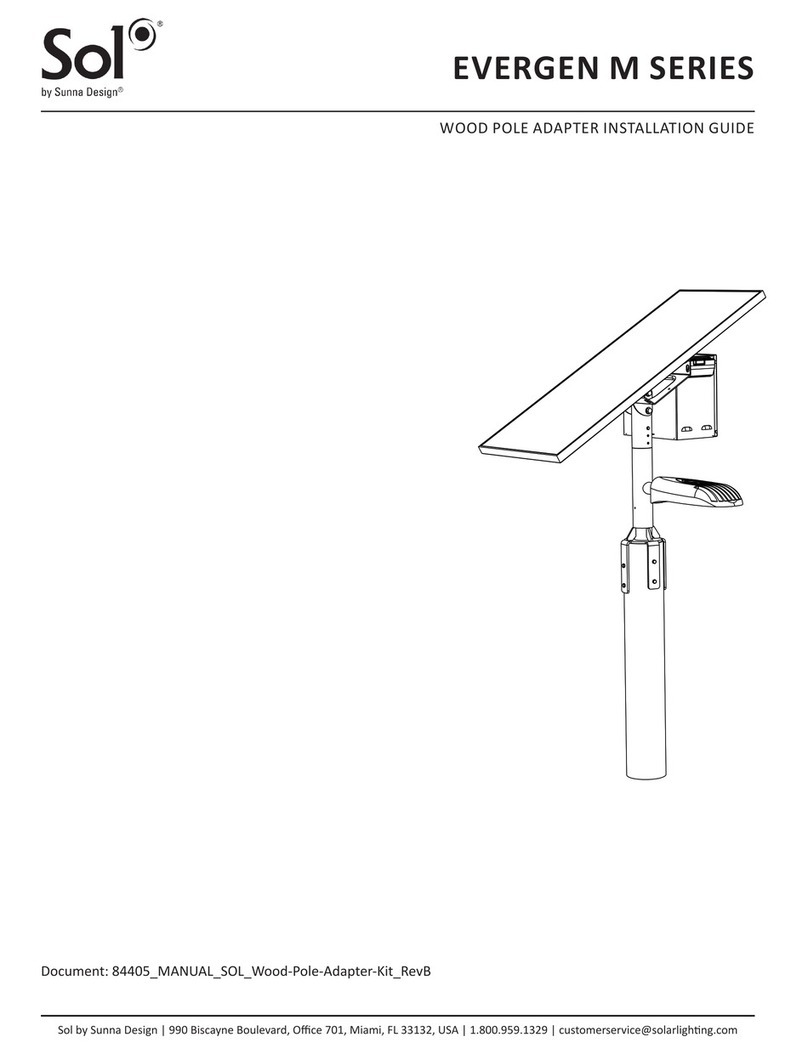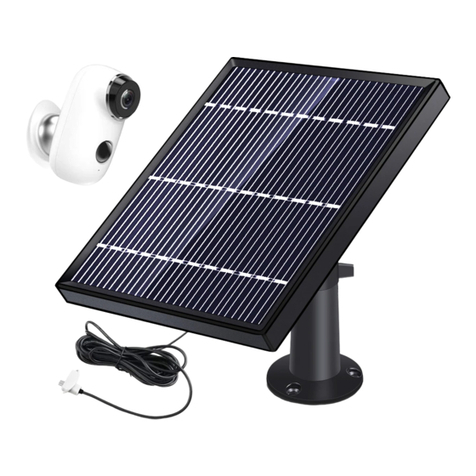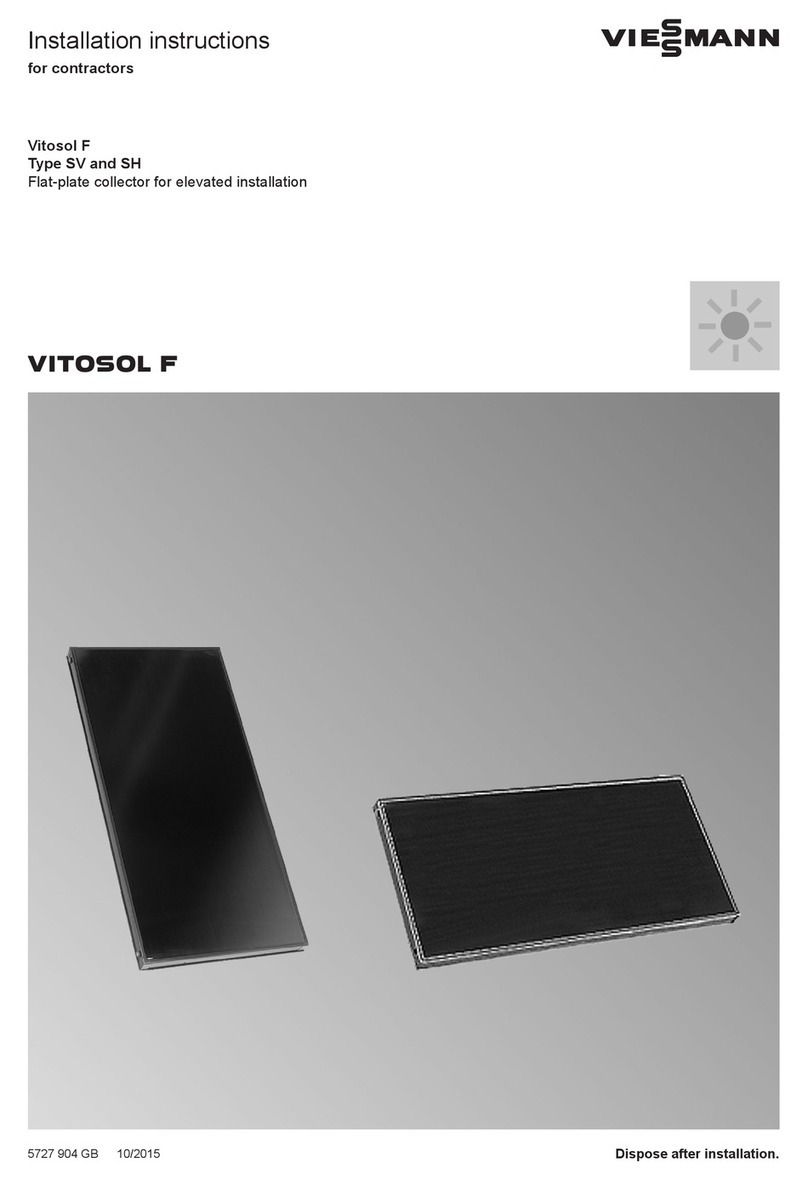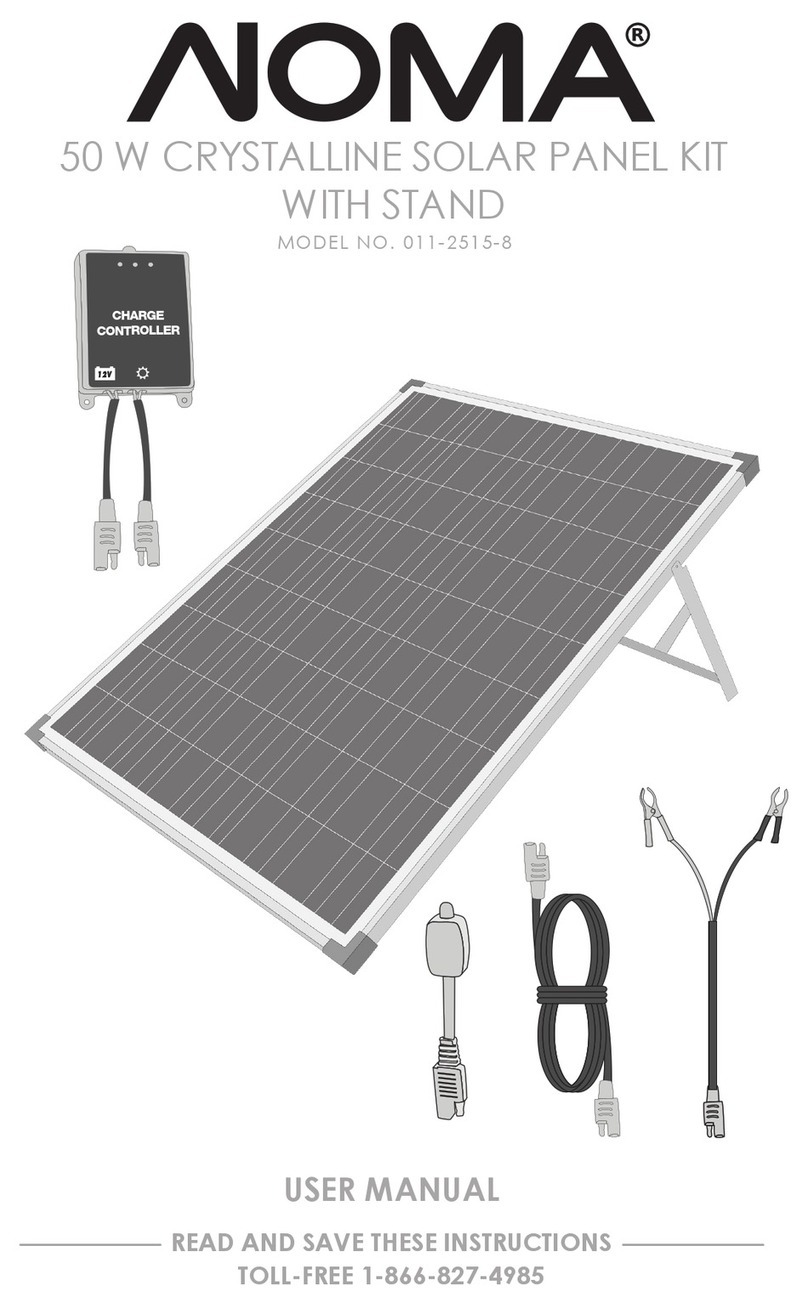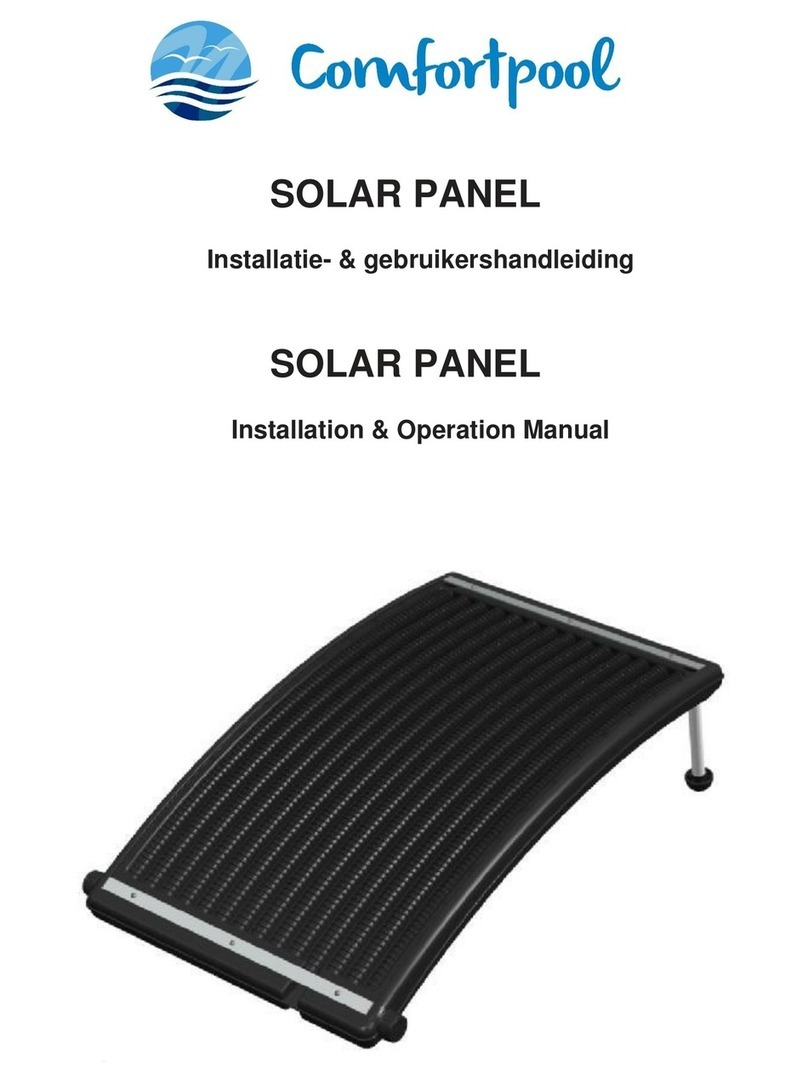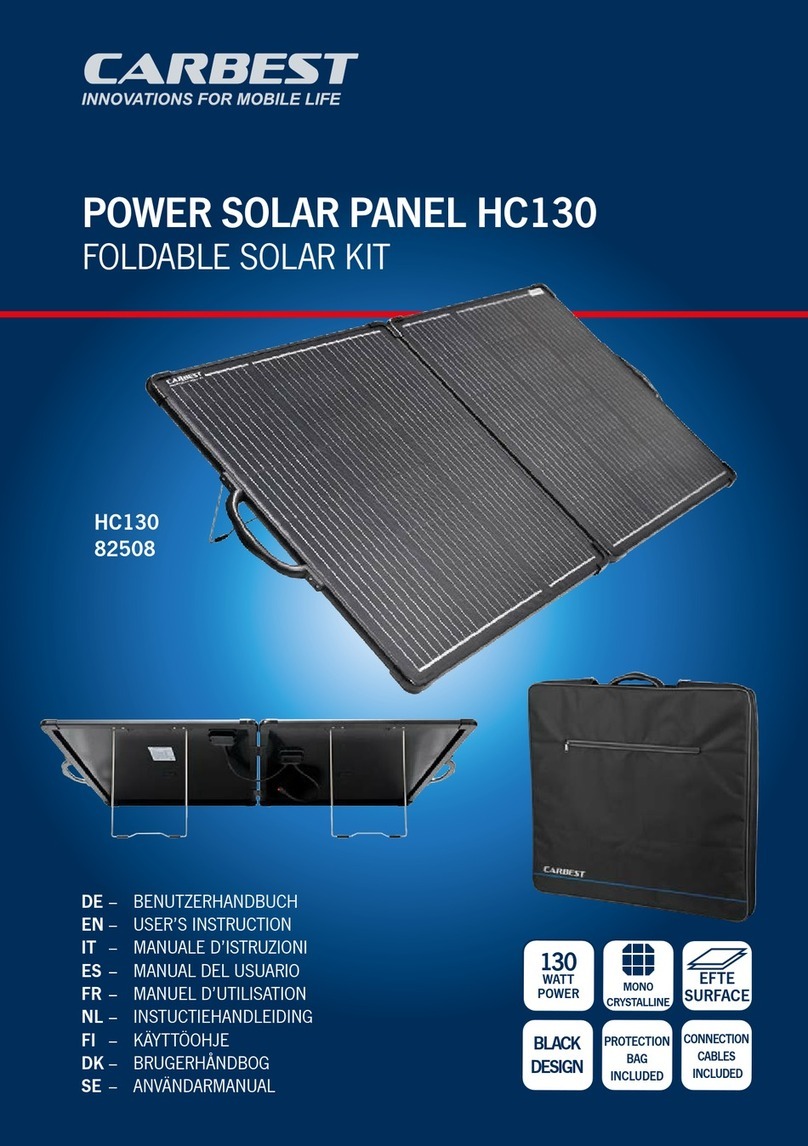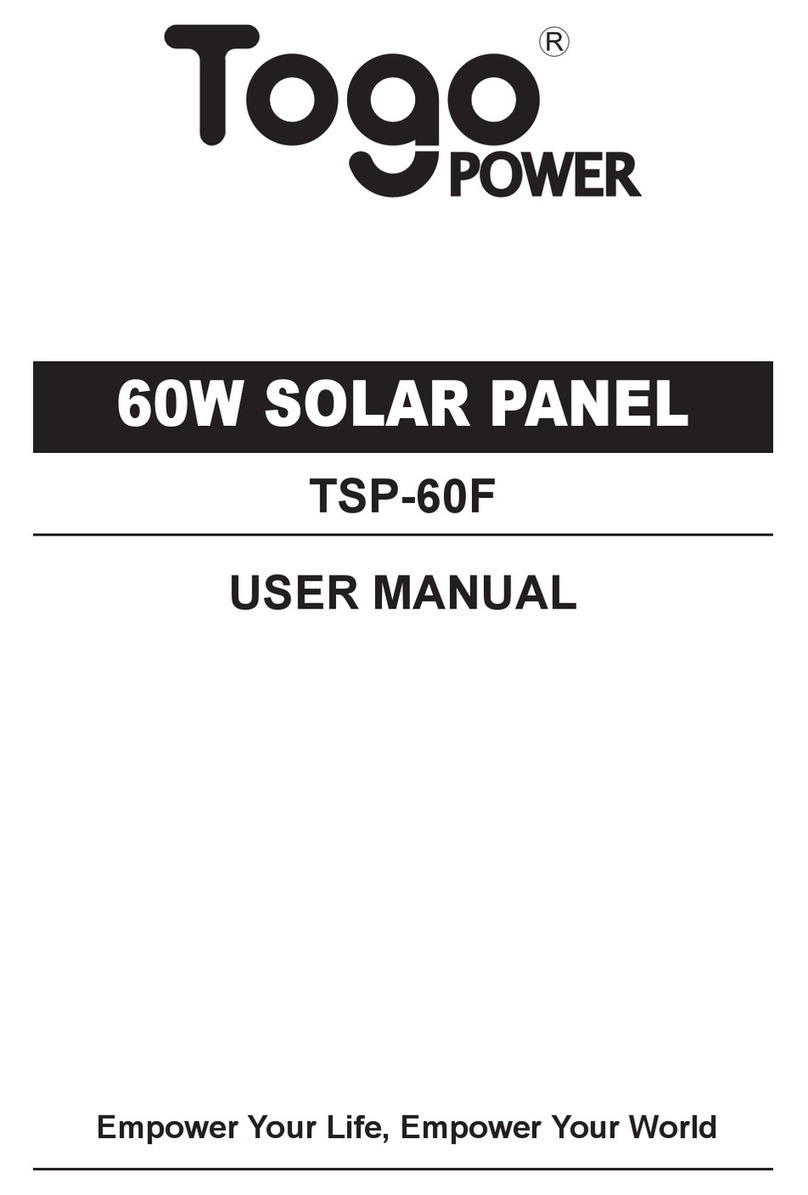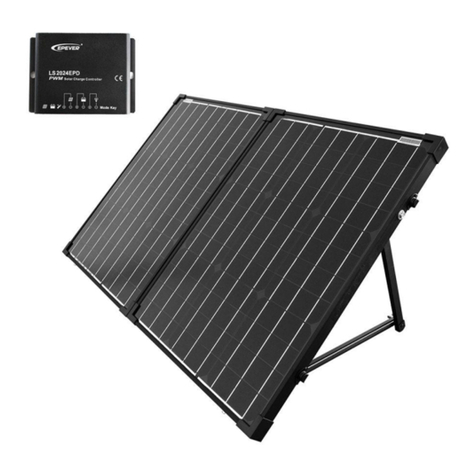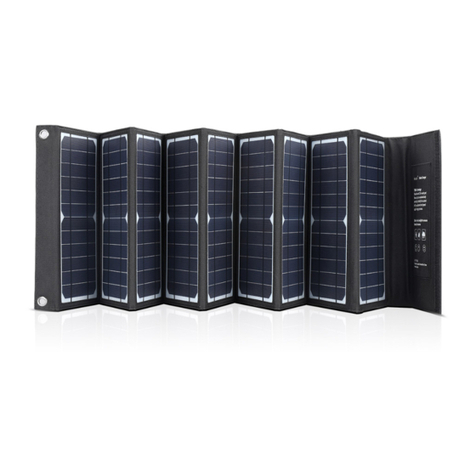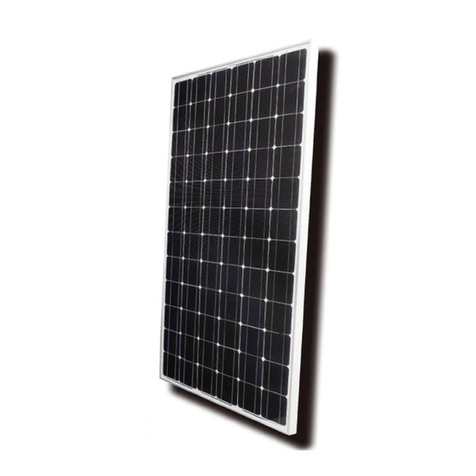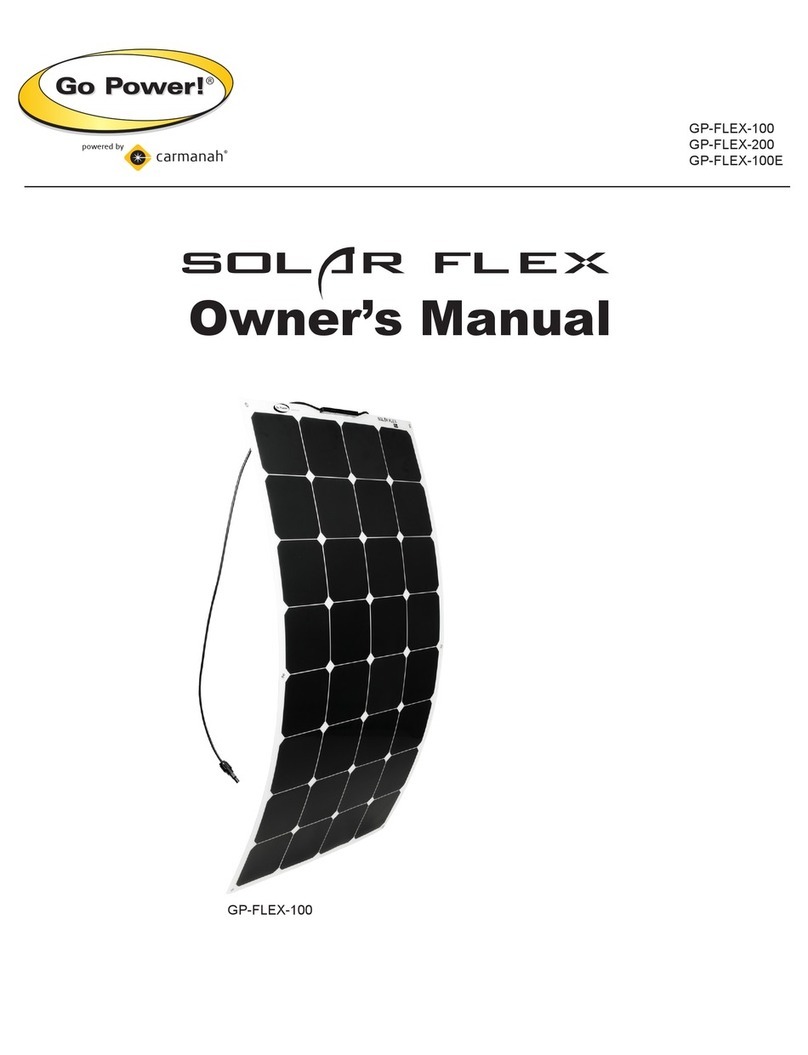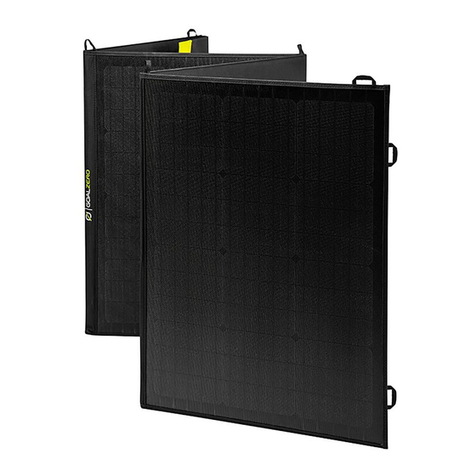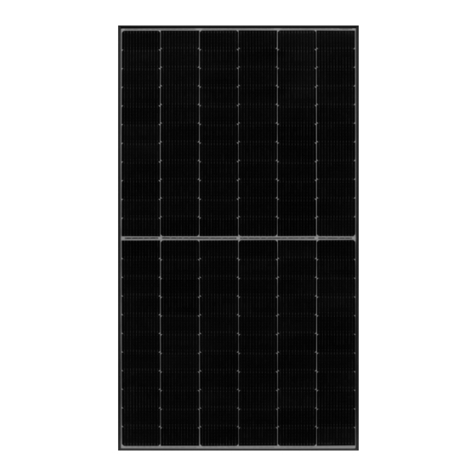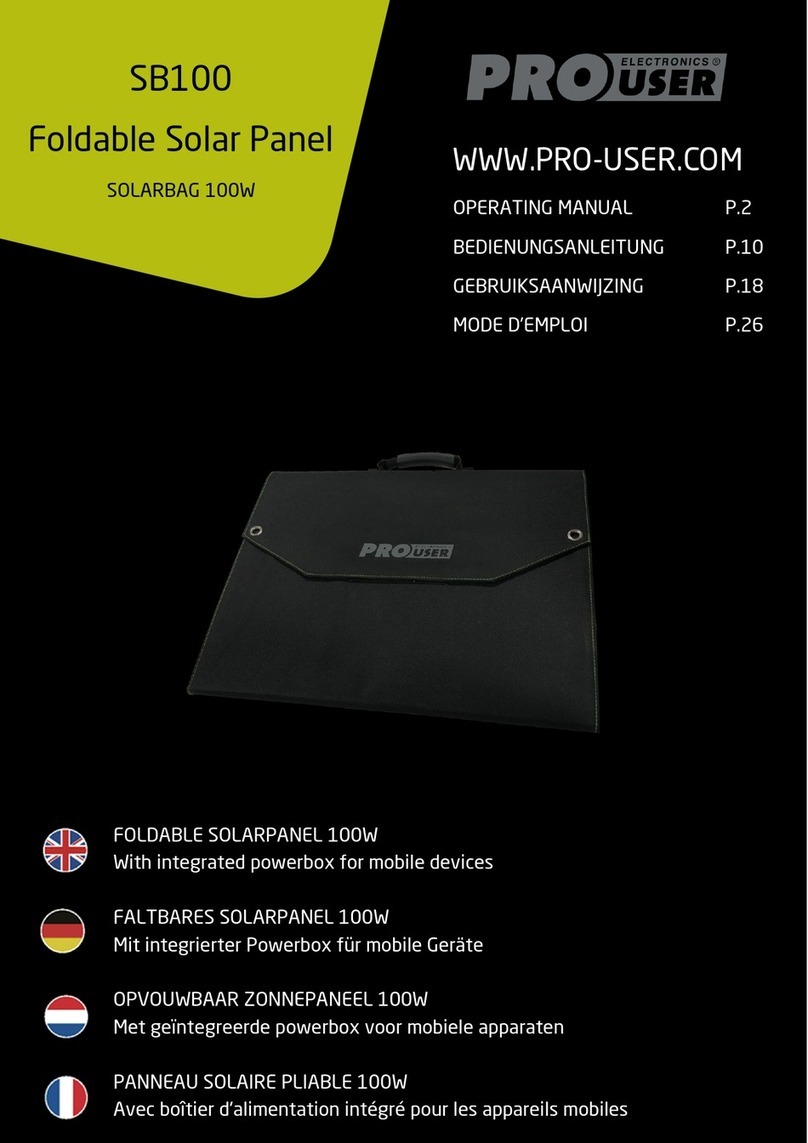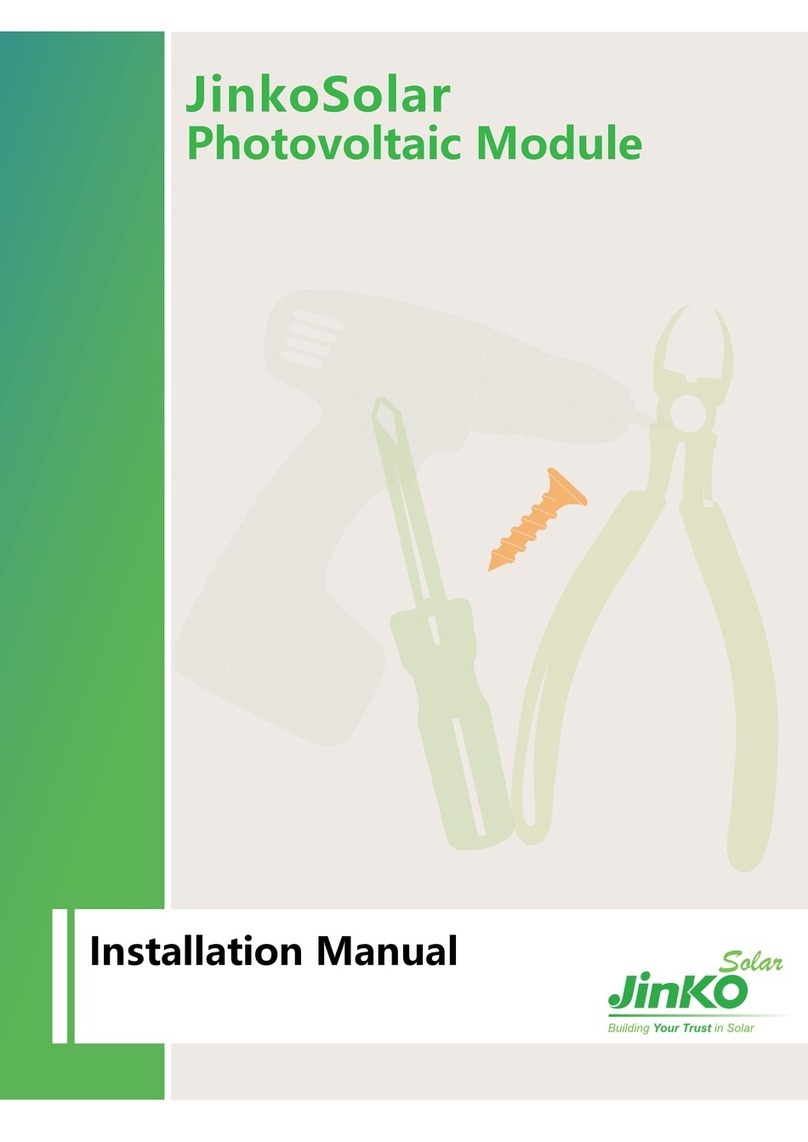Thermics 10 DTH V2 User manual

Code: 8TAV00005
INSTALLATION MANUAL
10 DTH V2
Forced circulation systems

Contents
Safety measures page3
a.
General instructions
b.
Installation instructions page3
page3
Panel description page5
c.
Panel information
d.
Description of label
e.
Panel overview
f.
Panel technical specifications
g.
Suggestions regarding sizing
page5
page6
page6
page7
page9
Panel installation page 12
h.
Notes regarding installation
i.
Transport and handling
j.
Choice of hydraulic connection and
examples
k.
Installation methods
l.
Standard support (composition)
m.
Flat roof installation with trestle
n.
Installation with brackets
o.
Hydraulic system assembly
p.
Charging the solar circuit and putting it into
operation
page 12
page 13
page 14
page 19
page 19
page 25
page 29
page 31
page 36
Panel maintenance and repair page 39
q.
Annual inspection of the panel and solar system page 39
r.
Safety systems page 39
s.
Replacing the evacuated tubes page 41
t.
Disposal of waste and the panel page 43

Safety measures
3/48
Safety measures
a.
General instructions
The system operator should:
-
Keep this manual carefully.
-
Make sure that the collectors cannot be accessed by unauthorized
or unaccompanied persons (minors, non-maintenance personnel
etc.).
b.
Installation instructions
Installation, charging, maintenance and repairs must only be carried out by a qualified
installer, in compliance with the following safety instructions:
-
Comply with current legislation of each country regarding accident prevention and
environmental safety.
-
Install the entire solar system according to the current regulations and recognized
technical practices for the installation of such equipment.
-
Follow the accident prevention regulations established by professional trade
associations, in particular the wearing gloves and protective goggles to avoid injury
and a safety harness, which should be anchored to the lifeline, when working roofs.
-
Do not carry out repairs on components that have safety functions. These must be
periodically checked and, if necessary, replaced.
-
Components must only be replaced using Thermics Energie original spare parts.
Failure to do so will void the warranty.
-
Avoid contact with high temperature components or with escaping steam as they
can cause scalds or burns.
-
Only remove the protective film from the collector after the solar system has been
charged and put into operation. Give the film to the user so that it can be reused.

Safety measures
4/48
-
Comply with the standards and directives regarding lightning protection and
equipotential bonding, which are specific to the country of installation.
-
Connect the parts that conduct electricity to the lightning protection system in
accordance with the specific regulations in force in the country of installation.
-
If working close to overhead power lines, adopt suitable measures to prevent both
stray and induced electric currents, and to comply with safety distances.
-
Incorrect installation can damage the collector and its components, so follow these
instructions carefully. Use the fixing systems provided by the manufacturer and use
suitable tools for installing them.
-
Installation must only be carried out by qualified personnel according to the national
and regional regulations in force.
-
Only use the fixing systems provided for the Thermics Energie collectors and read
the current regulations provided in these instructions in order to install them
correctly.
-
Do not pass under raised or suspended loads; falling objects can cause injury.
Comply with the regulations in force regarding working at the specific height
-
and cordon off and mark the area to ensure that it is clearly visible, as required by
the regulations.
-
Comply with the required distances from the edge of the roof when installing the collector.

Panel description
5/48
Panel description
c.
Panel information
High performance sophisticated and technologically advanced evacuated
tube solar collector. Equipped with a compound parabolic trough type
concentrator reflector specifically designed for this product. It has the highest
annual energy yields among solar collectors for hot water production.
Designed for use in large solar fields of medium/large plants, where not only
the efficiency of the individual panel but also its ability to optimize the
efficiency of the entire solar field are a fundamental aspect for the economics
of the investment. The specific design objectives of the Thermics Energie
solar collector allows the carrier fluid distribution lines to be simplified and
significantly reduced and the available spaces to be optimized. The Thermics
Energie solar collector is a robust, high quality product that guarantees long-
lasting performance. This is achieved by the manufacturing process and the
materials used, together with the numerous and stringent in-house checks
carried out directly on the production lines. Some are conducted on every
single component or subsystem.

Panel description
6/48
d.
Description of label
The following label on the panel, located at the top right of the frame, is as follows:
1.
Manufacturer details
2.
Product details
3.
Solar Keymark certification label
4.
Panel name
5.
Technical information
e.
Panel overview

Panel description
7/48
1.
Evacuated tube Dn 58 mm
2.
Aluminium frame cover
3.
Aluminium panel frame
4.
Evacuated tube seal
5.
Blank end cap
6.
End cap with holes
7.
Water connections
f.
Panel technical specifications
Model
10 DTH V2
N° Tubes
10
L1 net
1150mm
L2 net
1166mm
Net area
2.09 sq.m
Gross area
2.38 sq.m
Fluid volume
2.23 l
Dry weight
52 Kg
Connections
Copper Dn22

Panel description
8/48
Pressure drop

Panel description
9/48
g.
Suggestions regarding sizing
Reference can be made to some general guidelines for the sizing of small Thermics
Energie solar systems as a starting point for the detailed executive design that the
system, designer or qualified professional technician should carry out according to
current technical practices and legislation:
- Solar collector orientation;
Azimuth angle
Angle formed on the horizontal plane between the orientation of the panels and
geographic South. If the panel faces south, the azimuth angle is 0°; if it faces
east or west it is 90°.
Maximum recommended orientation = 30° south / east - 30° south / west. If the
orientation of the roof pitch is greater than 30° with respect to the south, you can
also consider installing it on a double EAST-WEST pitch.
It is very important to make sure that there are no obstructions on the horizon line
that could affect the irradiation of the collector during the transit of the sun. Any
obstructions should be reported as this information affects the sizing of the solar
collectors and can reduce their yield.
Note It is recommended that you follow the orientation indicated in this manual. Any
other orientation will not guarantee the optimal performance of the panels installed.
Please contact the Thermics Energie technical department if you require
suggestions.

Panel description
10/48
- Conditions of use and period of use
Conditions
Southern
Italy
Central Italy
Northern
Italy
Water produced (45°C) per
square metre of solar
surface installed
110 - 120 L
90 - 100 L
80 - 90 L
Surface of integrated LT heating
systems for each square metre of solar
surface installed
20 - 25 sq.m
15 - 20 sq.m
10 - 15 sq.m
Ratio of solar surface
to pool area for summer use only
40 % - 45 %
30 % - 35 %
25 % - 30 %
Note For preliminary DHW sizing, the total requirements of the family have to be
considered, assuming a water consumption (45°C) of between 45 and 70 l/day per person.
Also ascertain and check the simultaneous use of the DHW and the period of use.
- Main components of the solar system:
Solar antifreeze
Sum the following to calculate the approximate amount of antifreeze needed by the solar
system.
Fluid volume of
the panel
installed
Capacity of the
solar circuit
expansion vessel
The amount
of antifreeze
contained in each
metre of tubing
(copper)
The amount
of antifreeze
contained in each
metre of tubing
(stainless steel)
The amount
of antifreeze for
each boiler
installed
10 DTH V2- 2.23 l
1/3
DN 18 = 0.20
litres
DN 16 = 0.29
litres
6 litres
from 200 to 300 L
Solar circuit expansion vessel
To calculate the approximate volume of the expansion vessel, consider 8 litres per
square metre of solar surface installed. The specific calculation of the vessel should
be carried out by the system designer or contact Thermics Energie technicians.
Solar filed reference flow rate
The nominal flow rate of Thermics Energie panels is established by considering a value
from 0.6 to 0.85 l/min per sq.m. The circulation unit also has to be selected and sized
accordingly, considering the area of the solar surface installed, the pressure drops of
the solar field and the circuit (local and distributed).

Panel description
11/48
Quick guide to selecting tubing for Thermics Energie solar systems with a maximum
delivery and return distance from the boiler of 15 metres
Capacity
Total solar
surface sq.m
Flow
rate
N°
collectors
Recommended
tubing
200L
2.38 sq.m
170 l/h
1
Copper 18 mm
300L
4.76 sq.m
228 l/h
2
Copper 18 mm
500L
7.14 sq.m
340 l/h
3
Copper 18 mm
800L
11.90 sq.m
569 l/h
5
Copper 22 mm
1000L
14.28 sq.m
681 l/h
6
Copper 22 mm
1500L
21.42 sq.m
1022 l/h
9
Copper 22 mm
2000L
28.56 sq.m
1363 l/h
12
Copper 28 mm
Note For complex systems with particular dimensions and characteristics, specific
calculations have to be made in order to determine the appropriate diameters.

Panel installation
12/48
Panel installation
h.
Notes regarding installation
We recommend that you follow the installation and safety instructions indicated
below in order to avoid damage to the system, people and property.
- The additional weight of the collectors, the people involved in the installation and
the load impose by wind and snow on the roof. Before installation, you should
check, together with the designer, what the maximum load of the system is and
carry out an on-site inspection to assess the usability, accessibility, freedom of
movement and quality of the building support for anchoring the collector support
devices. The same assessment procedures should be carried out for a wall
installation.
- We recommended that you check, during the preliminary phase, the loading due
to wind and snow according to the position of the installation, its location, height
from the ground, exposure and the climatic conditions of the area etc. according
to the provisions of the Decree of the Ministry of Infrastructure and Transport of
14 September 2005 “Technical standards for constructions” and subsequent
decrees. A maximum sustainable load of 0.90 kN/m² perpendicular to the surface
of the collector should be taken into account in the calculations for evaluating the
load stress from single and combined loads due to wind and snow. The solar
collector has been designed to withstand the most severe combined wind and
snow conditions that are characteristic of Italy, as required by the reference
standard. However, if load situations that exceed the maximum load of the panel
are expected, it is recommended that you provide additional protection, such as
tie rods, reinforcements and additional ballasts, to be decided on site.
- The maximum angle of inclination is 90°.
- Use safety harnesses, scaffolding and ladders to prevent falls and objects
connected to them.
- Make sure that the materials supplied are complete and do not show any signs of
damage.
- The solar collectors must not be exposed to the sun's rays until they have been
charged, otherwise the guarantee will be voided. Only remove the protective film
included in the factory packaging from them after the solar system has been
charged and tested, within a maximum of four weeks. For longer times, it is
recommended that you cover the collectors with a suitable sheet.
- Avoid shade and orient the collector as much as possible towards the south.
- The solar field connection pipes must be made of copper or stainless steel. Do not
use other materials such as galvanized steel, multilayer etc. when using copper
or stainless steel pipes.

Panel installation
13/48
- It is recommended touse quick couplings forstainless steel and screw-on or weld-
on fittings for copper pipes. The use of other materials may affect the tightness
of the joints or connections over time. It is always recommended to use Teflon for
high temperatures on the solar circuit when making connections to the boiler.
- There should always be a certified safety valve in the solar circuit. All
Thermics Energie solar stations and modules are fitted with a certified safety
valve.
Also install a metal drain at the outlet of the safety valve in a special brass
container as per regulations.
- Make sure that the thermal insulation of all the solar circuit pipes and all the fittings
can withstand high temperatures of up to 150°C.
- The heat transfer fluid supplied is specific for solar collectors and is ready for use.
It guarantees protection down to -12°C. Contains corrosion inhibitors and must
not be mixed with other fluids or diluted with water, it must only be topped up with
Thermics Energie antifreeze.
- Always install high temperature manual bleed valves at the highest points of the
solar circuit to be able to bleed the entire circuit.
- After installing the products, make sure that the pre-charge pressure of the vessel
complies with that of the project. Make sure that the probes are correctly
connected to the control unit. Make sure that the control unit is correctly
connected to the power circuit and that the parameter settings comply with those
indicated during the selection and design phase.
i.
Transport and handling
In addition to the usual standard precautions to take when handling items and
products containing fragile components, you should also bear in mind the following:
- Use the factory packaging for transport and handling, which includes wooden
pallets that can be handled by a forklift truck.
- For lifting to upper floors or onto the roof by crane, use fabric slings. Connect them
directly to the pallet (recommended lifting method). If a single panel has to be
lifted, always do so by using the straps with the head with the connections facing
downwards (see figure). Alternatively, you can slide the screws (at least 2) into
the guide at the bottom of the head (under the panel) to which you can secure
hooking systems (such as eyebolts for example.
- Pay attention to movements caused by wind.

Panel installation
14/48
j.
Choice of hydraulic connection and examples
Thermics Energie panels can be connected in series in a battery having a total
surface area up to 35 sq.m. The hydraulic inlet and outlet connections to the
panel can be installed one on one side and one on the other, either on the right
or left, or both on the same side, either right or left.

Panel installation
15/48
The following connection possibilities are available for 10 DTH V2 panels:
- Conditions of use and period of use

Panel installation
16/48
Note For collectors in rows of batteries it is recommended to keep adistance of at least 1500
mm between one battery and another for flat roof installations and at least 300 mm for
pitched roof installations. However, it is essential that sufficient space is provided to allow
operator access the space between one battery and another.
Key to details and connection examples
Detail
Description
A
Curved or straight compression fitting for copper pipe
Dn22 Compression T fitting with thermowell for copper pipe
Dn22
B
Straight compression fitting for copper pipe Dn22
C
Caps for copper pipe Dn22
D
Curved or straight compression fitting for copper pipe Dn22
Delivery and return from boiler

Panel installation
17/48
- Series of collectors connected with Tichelman reverse-return system

Panel installation
18/48
Key to details and connection examples
Detail
Description
A
Compression T fitting with thermowell for copper pipe Dn22
Cap for copper pipe Dn22
B
Straight copper - copper pipe fitting Dn 22 x 22
C
Curved or straight compression fitting for copper pipe Dn22
Cap for copper pipe Dn22
D
Curved or straight compression fitting for copper pipe Dn22
Cap for copper pipe Dn22
Detail
Description
A
Quick coupling 4-way fitting with stainless steel - copper probe thermowell Dn
16 x 22
B
Straight copper - copper pipe fitting Dn 22 x 22
C
Quick coupling for copper - stainless steel pipe Dn 22 x 22
D
Quick coupling for copper - stainless steel pipe Dn 22 x 22
*the diameter of the "stainless steel" fittings varies according to the pipe

Panel installation
19/48
k.
Installation methods
........................................................................................................................
The DTH-CPC collectors can be installed in different ways according to the anchoring
surface available:
•
pitched roof and long screws or brackets
•
pitched roof and trestle
•
flat roof and trestle
•
façade
l.
Standard support (composition)
In order for the Thermics Energie panels to be installed correctly, please follow the
instructions below for positioning the brackets on a sloping roof.

Panel installation
20/48
Table of contents
